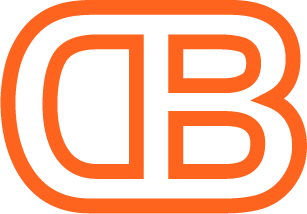Airbnb Revenue Management Secrets
Introduction
As an Airbnb host, maximizing revenue doesn’t have to mean hours spent analyzing prices or manually adjusting your rates. Using a set of smart revenue management techniques can streamline your operations and help you make more money with minimal daily effort. In this blog, we’ll explore several Airbnb revenue management secrets, from automated pricing tools to data-driven forecasting, that can enhance your earnings while keeping your workload manageable.
What is Airbnb Revenue Management?
Airbnb revenue management is the strategy of setting flexible pricing that adjusts based on various factors such as seasonality, demand trends, local events, and market competition. By using automated tools and strategic adjustments, you can maximize bookings and income without constantly monitoring your listing. The aim is to optimize both your occupancy rate and revenue per available night.
Why Revenue Management Matters
Revenue management helps Airbnb hosts balance occupancy and earnings. By implementing a few automated strategies, you’ll improve your visibility in search results and appeal to a broader range of guests. Using technology and data-driven adjustments can turn what might be a time-consuming task into a seamless process, so you can spend less time on daily operations and more time growing your Airbnb business.
Step 1: Use Dynamic Pricing Tools for Automated Adjustments
Dynamic pricing is one of the best-kept secrets in Airbnb revenue management. By using a dynamic pricing tool, you can set your listing rates to automatically adjust based on market demand, local events, and seasonality.
Choosing the Right Tool
Tools like PriceLabs, Beyond Pricing, and Wheelhouse allow you to automate price adjustments. Each tool offers features that cater to different host needs:
Customizable Settings: You can set a minimum price to cover operating costs, or a maximum price to avoid overpricing.
Real-Time Adjustments: These tools help your rates remain competitive in a rapidly changing market.
Seasonal Adjustments: Many pricing tools have customizable seasonal settings, letting you set automatic increases for peak seasons or holidays.
Setting Price Floors and Ceilings
Setting minimum and maximum rates is essential to protect your revenue while staying competitive. A price floor ensures you don’t book below an amount that covers your costs, while a price ceiling limits pricing during peak demand, preventing overpricing. Many dynamic pricing tools allow you to set these boundaries, providing peace of mind that your rates remain optimal without daily intervention.
Step 2: Forecast Demand with Data Analytics
Demand forecasting lets you anticipate future bookings based on past trends, helping you make proactive rate adjustments. Data analytics is a powerful asset, offering insights that can guide your revenue management strategy with minimal ongoing work.
Analyze Historical Data
Historical data reveals trends over time, showing you when demand typically rises or falls. For example, if your listing is in a ski resort town, you’ll notice increased bookings in winter. Knowing these trends allows you to plan for rate changes in advance, so you’re ready to capitalize on seasonal demand.
Identify Guest Booking Patterns
Guest booking windows—the typical timeframe in which guests book—vary by location and listing type. If your data shows most bookings happen within 30 days of check-in, consider offering small discounts for last-minute stays to capture those bookings. By recognizing guest booking patterns, you can fine-tune rates without requiring constant attention.
Step 3: Optimize Your Listing to Complement Revenue Management
Revenue management goes beyond pricing; optimizing your listing helps attract guests and maintain occupancy with little extra effort. Small adjustments to your listing can lead to big improvements in both search visibility and booking rates.
High-Quality Photos and Detailed Descriptions
Listings with clear, high-quality photos and engaging descriptions are more appealing to guests. Use professional photos to showcase your property, and ensure the description highlights unique features and amenities. If your listing is near popular attractions or includes standout amenities (like a hot tub or fireplace), mention these clearly to appeal to more guests.
Emphasize Positive Reviews and Offer Instant Book
Positive reviews help build credibility, and having an Instant Book feature can encourage more guests to book without waiting for host approval. High guest satisfaction and a quick booking process keep your occupancy rates high without requiring constant monitoring or messaging.
Step 4: Leverage Last-Minute Discounts and Longer-Stay Offers
Last-minute discounts and extended-stay offers can help fill gaps in your booking calendar with minimal effort. By setting up these options in your pricing tool, you’ll automatically adjust prices to attract different types of guests.
Last-Minute Discounts
Setting up discounts for guests booking within a short window (like 7 days before check-in) can help you capture bookings that might otherwise go unfilled. Many pricing tools allow you to automate these discounts, making it an effortless way to fill open dates.
Encourage Longer Stays
Offering discounts for longer stays (a week or month) can improve your occupancy and lower turnover costs. A well-priced longer stay can help you maintain consistent bookings without the hassle of managing frequent check-ins and cleanings.
Conclusion
Airbnb revenue management doesn’t need to be a complex, hands-on process. By using automated pricing tools, analyzing data, optimizing your listing, and setting up last-minute or extended-stay discounts, you can maximize your earnings with minimal effort. Whether you’re a new host or experienced, these revenue management secrets can streamline your strategy, giving you more time to focus on growing your business or simply enjoying the benefits of being a successful host.
Ready to elevate your Airbnb revenue management strategy? Contact us to learn more about our dynamic pricing solutions and get started on optimizing your earnings today.
